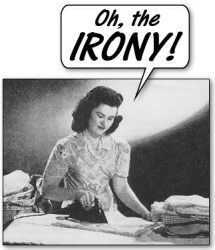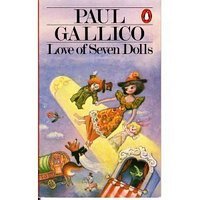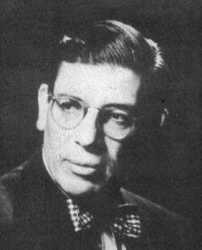Duncan Smith's Blog, page 3
April 29, 2016
Liking Things Ironically
 You know that phrase ‘the guilty pleasure’ – what’s that about? Binge drinking? Gluttony? Serial killers who enjoy their work? Actually, serial killers don’t tend to suffer from moral angst. No, the guilty pleasure is about ‘cool’ people who like ‘uncool’ things in popular culture.
You know that phrase ‘the guilty pleasure’ – what’s that about? Binge drinking? Gluttony? Serial killers who enjoy their work? Actually, serial killers don’t tend to suffer from moral angst. No, the guilty pleasure is about ‘cool’ people who like ‘uncool’ things in popular culture.
See, a lot of people think they’re too intelligent or cool to like some item of pop culture. But they do like it and that causes an existential crisis. If they like something uncool does that make them uncool too? The solution is to call it a ‘guilty pleasure’. As long as they confess guilt about liking it, they’re off the hook. Which is a relief, because the most important thing in life is being cool, or so they think.
Your coolness is often judged on your clothing, speech and behaviour, but especially on your cultural tastes i.e. the kind of music, films, books etc you like. The problem is that many parts of popular culture aren’t considered cool at all, even though by definition lots of people like them. This is a dilemma for those who like uncool things but want to be seen as cool themselves.
People have now come up with a solution to this devastating social problem. It’s related to the ‘guilty pleasure’ solution, but taken up a notch or two. The solution is liking things ironically. It’s a strange concept but as far as I can tell, what it entails is you’re allowed to like something as long as you make it clear that you actually regard it with the utmost scorn and derision.
For example, back in the last century a friend and I went to a vampire movie. This was before various books and TV shows made vampires cool. It was a good film and the vampire genuinely frightening, but every so often my friend let off a superior chuckle just to assure me that she knew what rubbish the film was. In those days, sophisticated adults weren’t supposed to like vampire movies. I suppose she was liking the film ironically, even though the phrase hadn’t yet come into vogue.
Liking things ironically is a new, updated version of the ‘guilty pleasure’ concept. The classical musician who likes Abba; the literary critic with a secret stash of whodunits; the aesthete who watches a bit of ‘trash TV’ at the end of the day. Why should these people feel guilty about such pleasures? Because liking these simple entertainments threatens their image as people of impeccable taste and refinement, or their position on the cutting edge of underground cool. If you consider yourself some kind of aesthete, intellectual or purple haired indie, then your liking for mainstream fare may bring an awful dose of self doubt and thoughts of ‘oh my god, am I really a commoner?’
It seems culture isn’t just something to be enjoyed, it is a social marker. If you want to be thought urbane, arty or cutting edge, you need to show conspicuous consumption of culture which are also urbane, arty or cutting edge. If what you really like are simple entertainments like rom-coms, disco music, or whatever, then you are outing yourself as a simpleton of the highest order.
And that’s the beauty of the ‘ironic’ solution. The brilliant aspect of liking things ironically is it’s a blank cheque to do or like whatever you want. You can dress up in the daggiest clothes and as long as it’s done ironically, you’re off the hook. You can like any old film, TV show or music and as long as your irony is made clear, you’re not kicked out of the cool club.
It’s important though to make it clear that you are doing it ironically. By all means like any aspect of pop culture you want to, but from time to time you must affirm that you actually regard it with the utmost scorn and derision. If you don’t, people will have grounds to suspect that you actually like it, rather than pretending to like it while really hating it as beneath you.
It’s very complicated, isn’t it? No wonder everyone has struggled to navigate this social maze. However, not everyone has gone down the ironic route. There have been other solutions. Some people have taken the innovative step of liking things straightforwardly rather than ironically. This is shown by the rise of ‘geek’ culture, in which comics and science fiction, for example, have been openly celebrated. A spokesman for the movement, Simon Pegg, says:
Being a geek is all about being honest about what you enjoy and not being afraid to demonstrate that affection. It means never having to play it cool about how much you like something. It’s basically a license to proudly emote on a somewhat childish level rather than behave like a supposed adult. Being a geek is extremely liberating.
Note the word liberating, a term more associated with the idea of coming out as gay. The new found celebration of something that in decades past was socially unacceptable.
Another solution has come from the academic world. With the invention of ‘cultural studies,’ the old distinction between high and low culture has been discarded entirely. By turning high brow thought onto low brow fodder, academics can now do whatever they want without fear of reprisal. Any part of popular culture is now fair game for study and analysis.
Yet for those who don’t identify as geeks or go to uni, and especially for ‘alternative’ types, the best solution is still liking things ironically. It’s win-win. You get to openly like anything you want, and as long as you make it clear how much you actually hate and despise it, you can get away with it.
Liking things ironically? What a concept! Humanity – how do you come up with this stuff?
My opinion – in case you can’t tell – is that liking things ironically is for posers. It’s for insecure people with an excessive need for peer approval. But in fairness, I can’t claim immunity to this social pressure, at least in the past. It’s something we all go through in younger years and hopefully we grow out of it. But I also remember the stupidity of what actually was proclaimed cool or uncool by the great arbiters of taste.
A classic example comes from the field of music. I’ve been a heavy metal fan since about age fifteen. For much of the 70s and 80s, large sections of the music press saw heavy metal as uncool. The default tone when referring to metal was disdain, condescension, or outright rudeness. Metal was seen as crude and vulgar music for dumb, unsophisticated people. Being openly rude about the genre was so normal as to pass unnoticed.
This same music press, however, could barely contain their gushing admiration for punk which is on the whole a far cruder and dumber genre of music. But because punk was tied up in some kind of political ideal, it was deemed cool by the morons of the music press.
So whereas Black Sabbath, for example, were mocked and lampooned by the idiots in Rolling Stone magazine, the Ramones, Sex Pistols, and later Nirvana were all gushed over as gods, despite being far simpler than Sabbath. It was only after the likes of Nirvana and Soundgarden professed their love for Sabbath that the latter finally started to become cool again.
Liking Black Sabbath was a pleasure for me but never a guilty one, and certainly never ironic. In fact, I would nominate ‘liking things ironically’ for the Golden Wank awards. Liking things ironically is a fake way to live, practised by posers and poseurs! Yet in some circles it is apparently so common now that a writer named Christy Wampole has studied it and had to go looking for that enemy of irony, authenticity.
Where can we find other examples of non-ironic living? … Non-ironic models include very young children, elderly people, deeply religious people, people with severe mental or physical disabilities, people who have suffered, and those from economically or politically challenged places …
Observe a 4-year-old child going through her daily life. You will not find the slightest bit of irony in her behavior. She has not, so to speak, taken on the veil of irony. She likes what she likes and declares it without dissimulation. She is not particularly conscious of the scrutiny of others. She does not hide behind indirect language. The most pure non-ironic models in life, however, are to be found in nature: animals and plants are exempt from irony, which exists only where the human dwells.
Wampole is right. The pose of irony is a purely human affliction, infecting those from teenage years to adulthood. It’s only the old or very young who don’t care what others think. Young children have not yet learned to care what others think of them and the elderly can no longer be bothered.
When it comes to cultural life, you either like something or you don’t. You can’t like something under the guise of hating it. Not unless you are a complete poser, anyhow.
Simon Pegg https://www.goodreads.com/quotes/556142-being-a-geek-is-all-about-being-honest-about-what
Wampole http://opinionator.blogs.nytimes.com/2012/11/17/how-to-live-without-irony/?_r=0
April 11, 2016
Why the Best Van Halen Singer Was Gary Cherone
One way to begin a story is with a headline so absurd that people read on just through annoyance. So here we go.
Van Halen has had three singers. David Lee Roth made six brilliant albums with the band. Sammy Hagar replaced him and made four, not great but still good. Then Gary Cherone joined and made one record, easily their worst. It was slammed by fans and critics alike, Cherone quit, and Van Halen didn’t make another album for fourteen years. In light of these facts, how can I possibly say Cherone was the best singer for Van Halen?
It’s an absurd statement, of course. The choice can only be between Hagar and Roth. Technically, Hagar was the best singer for his vocal range and ability to sing in tune, neither of which were ever strong points for Diamond Dave. Yet Roth was a bigger personality, better lyricist, and the beneficiary of Edward Van Halen’s best songwriting.
Even so, there’s one way Gary Cherone was the best singer for Van Halen, and that was in the setlist for the live show. The Cherone era is the ONLY time a Van Halen live show has ever featured a balanced mix of both the Hagar and Roth material. Every other time since 1986, that ideal has been thwarted by ego. When Hagar joined, he refused to play any of the Roth songs, except the most obvious, boring ones (Jump, Panama, You Really Got Me, etc). Then, when Roth rejoined in 2012, he refused to sing any Hagar songs at all.
It’s a pretty poor letdown when fans are denied the chance to hear great songs simply through the giant (or fragile) egos of singers. It’s like Ian Gillan in Deep Purple. Plenty of fans would have loved to hear ‘Burn’ from the Coverdale era, but Gillan ruled it out.
In Australia, the first time we ever got to see Van Halen live was in 1998, with Gary Cherone singing, and the setlist was first rate. The best of Hagar, the best of Roth – but you can guarantee this is the only time in the history of Van Halen it will ever happen!
I’ve just read Greg Renoff’s book Van Halen Rising, an account of their struggle to get a record deal in the seventies. Despite having looks, talent, charisma, songs, regular gigs and a strong live following, it still took them over five years to get signed. This seems ridiculous in hindsight, but as Renoff says, heavy rock was seen as a dead genre in mid-seventies America. Record companies were into soft rock, disco, or punk.
The first Van Halen album finally came out in 1978, to mixed reviews. Renoff quoted some of the reviews in his book, and it was a reminder of the typical arrogance of 1970s rock critics. At the time, it was de rigueur for critics to make condescending or straight out rude remarks about heavy rock musicians and fans. There was always the implication that those into heavy rock were sub-human beings too stupid to be taken seriously.
In light of this, it’s worth remembering that some of these same critics were in awe of ‘punk classics’ like the first Ramones album, the Sex Pistols’ Never Mind the Bollocks, and Patti Smith’s Horses. Musically, at least, these were highly simplistic, the work of toddlers compared to the virtuoso guitar playing of Edward Van Halen. Yet in 1978, plenty of critics would have rated these albums more highly than the debut record from Eddie and co … which is even sillier than my statement that Gary Cherone was the best singer for Van Halen!
March 5, 2016
Who Are the Foxes?
Peter Fitzsimons doesn’t know who the Foxes are. This is odd for two reasons. First, Fitzsimons is a leading sportswriter and right now the Foxes are the greatest story in world sport. Second, the Foxes are underdogs and there’s normally nothing Peter likes more than that.
The Foxes are Leicester Football Club who, in twelve months, have gone from last to first in the hardest football league in the world, the EPL. This is a sporting miracle, yet Peter recently claimed not to know who they are.
As I said, there’s usually nothing Fitzsimons loves more than an underdog. Wildly against-the-odds victories are his stock in trade and his tales sometimes veer towards mawkishness. Indeed, someone wrote a comment on one of his articles, referring to
‘… his tales of gay, disabled children scoring points from their wheelchairs in the dying seconds of matches and then being carried aloft from the field in those chairs.’
This sounds like a caricature, but strangely it is not much of an exaggeration! If anything, it’s an understatement. In Peter’s feelgood yarns, usually the wheelchair kid’s team is on the brink of bankruptcy, the local community has to dig deep to put on a cake raffle to raise just enough funds for the team to compete. Next thing you know, that gay disabled kid has scored the winning goal in the final, probably against the team containing the son of the local white supremacist who’s also head of a global corporation. OK, now, I’m getting into caricature, but this sort of Boy’s Own Adventure with a PC twist is what Peter tends to do.
In which case, I see no reason at all why Mr. Fitzsimons shouldn’t embrace the noble Foxes of Leicester. The EPL is a tough football league. It is rife with inequality based on wealth. The rich clubs pay top players millions of pounds a week. The poorer clubs get by with the dregs that remain. For at least the last decade, only five teams had the remotest chance of winning it: Chelsea, Arsenal, Liverpool, or the two Manchester teams.
Twelve months ago to the day, Leicester Football Club were languishing at the bottom of the table. They were dead certs for relegation and football oblivion. Suddenly and for no apparent reason, they put together a string of wins. Just enough to keep them in the top division. Then at the end of the season, their manager was sacked and his son, caught in a sex scandal, was also kicked out of the club.
Leicester appointed an aging Italian manager, long past his use by date. The football media scoffed at the appointment. But fast forward to March 2016 and look who’s top of the table? You know it, I know it, and Peter soon will know it – it’s those Foxes of Leicester. Vardy and Mahrez – those gay, disabled wheelchair kids – are knocking in goal after stunning goal, and by Christ you can forget the cake raffle because Leicester just might win the league. It’s a genuine sporting miracle. That’s who the Foxes are. So now you know.
February 10, 2016
Liking Things Ironically
You know that phrase ‘the guilty pleasure’ – what’s that about? Binge drinking? Gluttony? Serial killers who enjoy their work? Actually, serial killers don’t tend to suffer from moral angst. No, the guilty pleasure is about ‘cool’ people who like ‘uncool’ things in popular culture.
See, a lot of people think they’re too intelligent or cool to like some item of pop culture. But they do like it and that causes an existential crisis. If they like something uncool does that make them uncool too? The solution is to call it a ‘guilty pleasure’. As long as they confess guilt about liking it, they’re off the hook. Which is a relief, because the most important thing in life is being cool, or so they think.
Your coolness is often judged on your clothing, speech and behaviour, but especially on your cultural tastes i.e. the kind of music, films, books etc you like. The problem is that many parts of popular culture aren’t considered cool at all, even though by definition lots of people like them. This is a dilemma for those who like uncool things but want to be seen as cool themselves.
People have now come up with a solution to this devastating social problem. It’s related to the ‘guilty pleasure’ solution, but taken up a notch or two. The solution is liking things ironically. It’s a strange concept but as far as I can tell, what it entails is you’re allowed to like something as long as you make it clear that you actually regard it with the utmost scorn and derision.
For example, back in the last century a friend and I went to a vampire movie. This was before various books and TV shows made vampires cool. It was a good film and the vampire genuinely frightening, but every so often my friend let off a superior chuckle just to assure me that she knew what rubbish the film was. In those days, sophisticated adults weren’t supposed to like vampire movies. I suppose she was liking the film ironically, even though the phrase hadn’t yet come into vogue.
Liking things ironically is a new, updated version of the ‘guilty pleasure’ concept. The classical musician who likes Abba; the literary critic with a secret stash of whodunits; the aesthete who watches a bit of ‘trash TV’ at the end of the day. Why should these people feel guilty about such pleasures? Because liking these simple entertainments threatens their image as people of impeccable taste and refinement, or their position on the cutting edge of underground cool. If you consider yourself some kind of aesthete, intellectual or purple haired indie, then your liking for mainstream fare may bring an awful dose of self doubt and thoughts of ‘oh my god, am I really a commoner?’
It seems culture isn’t just something to be enjoyed, it is a social marker. If you want to be thought urbane, arty or cutting edge, you need to show conspicuous consumption of culture which are also urbane, arty or cutting edge. If what you really like are simple entertainments like rom-coms, disco music, or whatever, then you are outing yourself as a simpleton of the highest order.
And that’s the beauty of the ‘ironic’ solution. The brilliant aspect of liking things ironically is it’s a blank cheque to do or like whatever you want. You can dress up in the daggiest clothes and as long as it’s done ironically, you’re off the hook. You can like any old film, TV show or music and as long as your irony is made clear, you’re not kicked out of the cool club.
It’s important though to make it clear that you are doing it ironically. By all means like any aspect of pop culture you want to, but from time to time you must affirm that you actually regard it with the utmost scorn and derision. If you don’t, people will have grounds to suspect that you actually like it, rather than pretending to like it while really hating it as beneath you.
It’s very complicated, isn’t it? No wonder everyone has struggled to navigate this social maze. However, not everyone has gone down the ironic route. There have been other solutions. Some people have taken the innovative step of liking things straightforwardly rather than ironically. This is shown by the rise of ‘geek’ culture, in which comics and science fiction, for example, have been openly celebrated. A spokesman for the movement, Simon Pegg, says:
Being a geek is all about being honest about what you enjoy and not being afraid to demonstrate that affection. It means never having to play it cool about how much you like something. It’s basically a license to proudly emote on a somewhat childish level rather than behave like a supposed adult. Being a geek is extremely liberating.
Note the word liberating, a term more associated with the idea of coming out as gay. The new found celebration of something that in decades past was socially unacceptable.
Another solution has come from the academic world. With the invention of ‘cultural studies,’ the old distinction between high and low culture has been discarded entirely. By turning high brow thought onto low brow fodder, academics can now do whatever they want without fear of reprisal. Any part of popular culture is now fair game for study and analysis.
Yet for those who don’t identify as geeks or go to uni, and especially for ‘alternative’ types, the best solution is still liking things ironically. It’s win-win. You get to openly like anything you want, and as long as you make it clear how much you actually hate and despise it, you can get away with it.
Liking things ironically? What a concept! Humanity – how do you come up with this stuff?
My opinion – in case you can’t tell – is that liking things ironically is for posers. It’s for insecure people with an excessive need for peer approval. But in fairness, I can’t claim immunity to this social pressure, at least in the past. It’s something we all go through in younger years and hopefully we grow out of it. But I also remember the stupidity of what actually was proclaimed cool or uncool by the great arbiters of taste.
A classic example comes from the field of music. I’ve been a heavy metal fan since about age fifteen. For much of the 70s and 80s, large sections of the music press saw heavy metal as uncool. The default tone when referring to metal was disdain, condescension, or outright rudeness. Metal was seen as crude and vulgar music for dumb, unsophisticated people. Being openly rude about the genre was so normal as to pass unnoticed.
This same music press, however, could barely contain their gushing admiration for punk which is on the whole a far cruder and dumber genre of music. But because punk was tied up in some kind of political ideal, it was deemed cool by the morons of the music press.
So whereas Black Sabbath, for example, were mocked and lampooned by the idiots in Rolling Stone magazine, the Ramones, Sex Pistols, and later Nirvana were all gushed over as gods, despite being far simpler than Sabbath. It was only after the likes of Nirvana and Soundgarden professed their love for Sabbath that the latter finally started to become cool again.
Liking Black Sabbath was a pleasure for me but never a guilty one, and certainly never ironic. In fact, I would nominate ‘liking things ironically’ for the Golden Wank awards. Liking things ironically is a fake way to live, practised by posers and poseurs! Yet in some circles it is apparently so common now that a writer named Christy Wampole has studied it and had to go looking for that enemy of irony, authenticity.
Where can we find other examples of non-ironic living? … Non-ironic models include very young children, elderly people, deeply religious people, people with severe mental or physical disabilities, people who have suffered, and those from economically or politically challenged places …
Observe a 4-year-old child going through her daily life. You will not find the slightest bit of irony in her behavior. She has not, so to speak, taken on the veil of irony. She likes what she likes and declares it without dissimulation. She is not particularly conscious of the scrutiny of others. She does not hide behind indirect language. The most pure non-ironic models in life, however, are to be found in nature: animals and plants are exempt from irony, which exists only where the human dwells.
Wampole is right. The pose of irony is a purely human affliction, infecting those from teenage years to adulthood. It’s only the old or very young who don’t care what others think. Young children have not yet learned to care what others think of them and the elderly can no longer be bothered.
When it comes to cultural life, you either like something or you don’t. You can’t like something under the guise of hating it. Not unless you are a complete poser, anyhow.
Simon Pegg https://www.goodreads.com/quotes/556142-being-a-geek-is-all-about-being-honest-about-what
Wampole http://opinionator.blogs.nytimes.com/2012/11/17/how-to-live-without-irony/?_r=0
January 28, 2016
Anjali Ramkissoon vs Mitchell Pearce: When Drunken Pests Attack
It used to be said you shouldn’t drink alone. Times have changed. If you’re going to get drunk and crazy these days, do it in private. Otherwise some bastard will be there filming it on his phone to make you look a goose on YouTube.
Two young drunks have shot to fame this week. Anjali Ramkissoon, a Miami doctor, was filmed attacking an uber driver and trying to trash his car. She’d tried to steal someone else’s ride and when the driver refused to take her home, she attacked him. A few days later, Mitchell Pearce, a Sydney footballer, was filmed at a party making drunken sexual advances at a woman, then pretending to hump a small dog.
The question is, who wins Drunken Pest of the Month for January? Let’s take a look at this heavyweight bout, Mitch vs Anjali, to see who has stuffed up the most. We’ll divide the scoring into categories. First, some context.
PROFESSION
Mitch is a footballer, Anj is a doctor. While athletes aren’t known for their intellectual skills, doctors attend uni for at least five years and are supposed to be high status. Win to Anj.
MOST EMBARRASSED FATHER
Anj’s dad is a doctor too. Mitch’s dad is a renowned teetotaller and works as a football administrator. Let’s call it a tie.
Now for the actual bout – who is the bigger drunken pest this month?
DESTRUCTION OF PROPERTY
Valliant effort by Mitch in peeing on the couch. But Anji’s ‘throw all the paper out of the car’ routine was a showstopper.
VIOLENCE
Unless you try to shoehorn the sexual harassment into this category, Mitch is a bit of a non-starter. Anj, on the other hand, tries to punch the Uber driver in the head and knee him in the groin. Another win for Anj.
SEXUAL HARASSMENT
A clear points decision to Mitch here. Kissed a lesbian then within seconds pretended to molest a small dog. Unless Anj’s attempt to knee the Uber guy in the balls counts as foreplay, Mitch has got this one in the bag.
OFFENSIVE LANGUAGE
While Mitch’s “I wanna fuck your dog” has merit, for sheer vitriol, he can’t compete with Anj’s order to the Uber driver to “Get the fuck in the car you piece of disgusting fucking shit.’ Both are a bit one dimensional in this category though – need to expand the old swear vocab for next time.
ABUSE OF POWER
Mitch expects sex on tap from randoms who fall into his orbit. The high caste Anj thinks she can attack with impunity a low caste Uber driver. Not sure who wins this one.
USE OF MANIPULATION
A fail from Mitch. While he does harass both the woman and dog, as soon as he’s rebuffed there’s just no Plan B. Weak effort. Anj on the other hand attacks the driver, knowing he can’t hit back. Then when the driver calls police to report the assault, she taunts him that she’s a ‘five foot, hundred pound girl’ so no one will believe she’s the attacker. When the cops arrive, she gets off with tears and pleading. So while Mitch is merely oafish, Anj shows greater manipulative skills. Easy win for Anj.
AND THE WINNER IS
While Mitchell tried hard, he was simply outclassed on this occasion. A clear points decision to Anjali.
MOST EVIL
The guy who filmed Mitch and sold the footage for 60K, and the media outlets who bought it. The one who filmed Anj gets off as he didn’t sell the footage.
Stay tuned for February’s bout in the YouTube Infamy cup. Let’s hope whoever it is can top Mitch and Anj.
January 26, 2016
The Top Five Paul Gallico Books
Paul Gallico was a 20th century American author. His best works are dark romances which show how love survives despite harsh conditions. Literary snobs tend to dismiss him as a popular author. While he made no attempt to be highbrow, Gallico’s writing shows a compassion and understanding of human nature rarely found in other authors. He wrote many novels and novellas – here are my top five:
5 – The Poseidon Adventure
Wait, wasn’t that the movie that kicked off the ‘disaster film’ genre in the 1970s? Yes – well, Gallico wrote the original book.
A freak storm at sea flips an ocean liner upside down. A group of survivors has to work their way out of the ship to reach safety. As a thriller, it’s a page turner, but the real story is about how each person behaves in crisis conditions. It’s a thriller with soul.
The editor, Sol Stein, said of fiction writing that ‘we need to know the people in the car before we see the car crash.’ We need to care. Oddly enough, this is shown in the two film versions of The Poseidon Adventure. The 1972 film has real characters, but in the terrible 2006 version it was like watching cardboard cut-outs trying to escape the sunken ship. All action, no soul.
4 – Flowers For Mrs Harris
Mrs Harris, a London cleaning lady, pursues a lifelong dream to own a Dior dress. In a classic underdog tale, Mrs Harris is a poor, old, uneducated woman who dares to reach for something beyond her lowly social status. Her quest takes her on a roundabout route to the House of Dior in Paris.
In the wrong hands, this could be a corny, feelgood story which doesn’t ring true. Gallico evokes a sense of compassion for Mrs Harris and the other characters. His plotting is also excellent. Here, as in other books, he draws together a range of characters and plot lines in a way one would not have suspected.
3 – The Lonely
Tells the story of Jerry, a young American pilot in World War Two who falls unexpectedly in love with Patches, an English girl. This throws his whole life into upheaval. Jerry’s background is rock solid – family, social class, career and fiancée. Yet his entire mapped-out future is cast into jeopardy by the unplanned romance.
In his decision to marry Patches, Jerry has to overcome a huge weight of social pressure, not least from his own parents. Gallico is at heart a romantic and love prevails, but only after considerable turmoil. It’s sensitively handled. Gallico doesn’t sneer at Jerry’s family or background. He shows them as limited but honourable people who deal as best they can with a difficult situation. Jerry’s father is pivotal to this and Jerry has to grapple with notions of what it is to be a man, and discovers an untapped wisdom within himself.
2 – Love of Seven Dolls
A dark romance featuring Mouche, an innocent street girl, and Capitaine Coq, a harsh, abusive showman who can only really communicate through the seven puppets in his travelling puppet show.
Mouche is a typical Gallico heroine – a true innocent struggling to survive in an evil world. Capitaine Coq is part of that evil. Mouche can only reach him through the puppets. This culminates in an extraordinary final scene which goes beyond ordinary life into some elevated realm.
Some modern readers have criticised the book for Capitaine Coq’s violent behaviour towards
Mouche. One reader review even accused Gallico of ‘1950s racism.’ I think this is misguided. To view past eras through the censorial standards of 21st century eyes is to shrink human experience down to a very small world indeed. The past was what it was. Though we live in more enlightened times, it will be a sad day when the thought police start rewriting old novels to fit today’s standards. A strength of Gallico’s dark romances is that he doesn’t sanitise life or human nature. He shows it as it is, for better or worse. Or rather, the way it was during his lifetime in the first half of the 20th century.
Gallico is ultimately an optimist. Love of Seven Dolls is a tale of redemption in which even the damaged Capitaine Coq is saved by the transformative power of love.
1 – Love Let Me Not Hunger
This is Gallico’s best dark romance. An English circus in the 1960s goes on tour in Spain. After a serious accident, the circus owner and most of the crew return to England. Some of the circus workers are left behind, with no food or money, to look after the animals. When help doesn’t arrive, the situation grows increasingly desperate until each character is drawn to a crisis point.
The physical starvation is a metaphor for each character’s hunger for love. They are a motley crew, with their various physical and emotional deformities. The grotesquery on display make it so much more real. This is not some sanitised TV sitcom filled with ‘the beautiful people.’ This is life in all its unvarnished reality – including the savagery and bitter struggle that is involved, especially for the less fortunate. In this desolate landscape, acts of compassion shine all the brighter.
It’s Paul Gallico at his best. An underrated and little known classic.
January 17, 2016
A Horror Story With No Apparent Foe

There’s nothing out here except heat, beer and dust.
A nightmare is usually something you wake up from with a sense of relief. For John Grant the ‘nightmare’ is something he awakens into, in a state of dread, each morning for five days. Hence the title, Wake In Fright, of a brilliant 1960 novel by Kenneth Cook, which was made into an equally good film in 1970.
Wake in Fright is a horror story with no apparent foe. There are no ghosts or demons, no serial killers, no predatory animals or aliens. It’s far more subtle than that. The sense of dread is barely noticeable at first, but steadily grows. The ‘enemy’ as it turns out is the environment itself, its strangely savage inhabitants, and the protagonist’s fear which binds him there.
John Grant is a sensitive, intellectual school teacher from the city. He describes himself as a ‘bonded slave of the education department.’ This refers to an actual policy of the time in which teachers had to complete a two year apprenticeship in the bush before being allowed to work in the city. Teachers had to post a bond of $1000, which was forfeited if they skipped out on the deal. $1000 was a lot of money in 1960.
John Grant has been assigned to Tiboonda, a tiny one-school town in the outback. He’s just finished the ordeal of his first year. This is at the height of summer in what is essentially a desert. It is a cultural as well as a physical desert. As a phrase from the movie puts it, ‘there’s nothing out here except heat, dust and beer.’ For the aesthetic Grant, Tiboonda is a place to be viewed with horrified incredulity. It can be kept at arm’s length by Grant’s retention of his own identity, and endured through the knowledge it is only temporary. He’s been kept sane by the thought of his six weeks annual holiday coming up in Sydney. As he boards the train at the end of term, he’s tantalised by dreamlike visions of water; breaking waves at Bondi Beach and his bikini-clad fiancée among them.
These images turn out to be desert mirages for Grant never escapes. He’s booked a stopover at a larger town named Bundanyabba, staying there one night before catching his flight back to Sydney in the morning. In a holiday mood, Grant goes out for a beer to kill time. In a local bar he meets Jock Crawford, the town cop, one of the ‘devils in human form’ of this story. Crawford, with no apparent effort or plan, puts the twin demons of alcohol and gambling within Grant’s reach. There’s reason to think these vices are not native to Grant. Indeed he looks on condescendingly as the locals engage in them. Yet Crawford somehow gets Grant to down a few beers, before taking him to a Two Up game. By story’s end, Crawford hints at a quiet satisfaction in Grant’s debasement.
Grant is soon drunk enough to have a go at the Two Up. Sure enough he wins three times in a row and triples his holiday pay. Whooping it up he runs off to his hotel room before the devil within plants an idea in his head: one more win will give him enough money to pay off the teacher’s bond so he won’t have to return to Tiboonda for the second year, or indeed at all – ever. In the grip of this wild hope, he returns to the game and of course loses all his money on the next play. He no longer even has his fare for the plane home. (I assume that in 1960, there were no prepaid bookings!) He stumbles off to bed, then wakes the next morning in a strange hotel room, naked, penniless, baking in the desert heat, with the hungover from Hell and the knowledge he now has no means of escape.
As a personal aside, perhaps this story resonates with me because I once found myself in a similar position. I was moving from Sydney to Adelaide, driving the 1000km journey with all my worldly possessions in my car. Speeding recklessly at the end of a long day outside a godforsaken small town called Hay, I crashed and rolled the car. I woke up the next morning in a strange hotel room, at the height of summer with no car, virtually broke, shattered and disoriented. I vividly recall the desert landscape, the heat, the fear, the sense of having been stripped of power, and being trapped in a remote Australian town.
John Grant’s nightmare has now begun. He’s stuck in Bundanyabba with no means of escape – but it’s not as if anyone is hostile to him. Here again is the strange subtlety of this film. In fact, the locals are aggressively hospitable, buying him endless rounds of beer, only getting offended when he asks them to stop.
‘New to the Yabba?’ he’s asked repeatedly. All the locals love the place John Grant despises, a fact that confounds him. ‘All the little devils are proud of hell,’ comments Doc Tydon, a cynical alcoholic doctor who Grant meets in a bar. Tydon’s ‘disease’ has prevented him working in the city, yet in Bundanyabba it is ‘barely noticed.’
It is Tydon who represents the greatest horror for Grant. Given to quoting philosophy and literature, Tydon has become a sort of educated beast, living in a squalid hut, permanently drunk, keeping a thin hold on the facade of civilisation. Grant is later taken on a drunken kangaroo hunt and sees Tydon cutting the balls off a dead roo, prizing them as a delicacy to be cooked and eaten later. This has added significance for a later event implied but not shown.
Doc Tydon has been all but absorbed into the hostile environment, slowly transformed into some kind of ‘talking pig.’ In John Grant’s waking nightmare, he sees this may be his own fate as well. Day by day, he realises his former self has evaporated into the desert heat. The only option is to surrender and become a beast himself. By the end of the five days, that is what he has become.
Wake in Fright, has no visible monsters: no ghosts, no sharks or serial killers. Even the humans are friendly to John Grant at every step of the way. At no time are they hostile to him. They’re all simply incidental devils living in the strange hell of Bundanyabba into which Grant has blundered.
The film could be said to caricature a certain kind of Australian masculinity, with its violence and drunken hedonism. But no, it is real, all too real. The story is filtered through the consciousness of the intellectual John Grant, a man who would be more at home in England’s ‘green and pleasant land,’ or walking the corridors of Oxford University. His waking nightmare is at the extreme end of a certain English perception of Australia and the Australian male, or a European’s perception of the outback. It is Grant’s own horror that has ensnared him, for without his desperate desire to escape the place, he’d never have risked losing the plane fare on so reckless a wager.
Money is power, its absence is slavery. For gamblers, the two sides of the ‘Two Up’ coin are not heads and tails, they are freedom and enslavement. Gambling is one of the demons of this nightmare. Alcohol is another. Beer is the same colour as sand. Beer is the liquid counterpart of the desert dust. In the end, it comes to the same thing. All drinkers know the ‘heat’ of dehydration and the futile illusion of drinking more to combat it.
This is all part of the awful brilliance of Wake In Fright. You can have your Evil Dead or Friday the Thirteenth. Real horror is to be found in the brutal banality of daily life with its harsh grind, its relentlessness, and the constant flux between hope and fear. Wake In Fright is the nightmare where the hope of escape tantalises again and again, only to vanish like a desert mirage and return you once more to your starting point. Forget twilight and midnight, real horror happens under the sun. So it is in this Australian classic.
January 5, 2016
Hayne Hype
One year ago, rugby league star Jarryd Hayne moved to the US and tried to make it in the NFL. Looks like he failed. His team the San Francisco 49-ers is one of the worst in the country but he can’t even get a game. The coaches won’t pick him. They even put him up for sale but there were no buyers.
Is this failure? In terms of football and what Hayne wanted to achieve, of course it is. But it’s too early to judge – he needs another couple of years and some more chances. At the moment though, it’s a fail.
In terms of life and character, it is not a failure. I’ve never been a Hayne fan but you’ve got to admire him for having the balls to leave his comfort zone, move to another country and try to make it in such a different sport. In that sense, Hayne is a total success, regardless of whether he makes it in the NFL.
The real failure is the Australian media. Their hysterical Hayne hype was ludicrous. Hayne made a couple of good plays during some pre-season trial games and the media carried on like he’d won the super-bowl singlehanded. One newspaper said Hayne was the greatest ever Australian sports story, better than Don Bradman.
This can now be seen exactly as many people saw it at the time – as a load of horseshit that should never have got past the editor’s desk. Sounds like Hayne didn’t appreciate it much either, from one report I heard. The hype overkill did him no favours and now it’s just made him look a bit silly, something he doesn’t deserve.
Then again, Hayne hype is nothing new. It’s been going on for years in rugby league. It reached its peak in 2009 when he strung together a few great games for his club, Parramatta. The media thought he was Jesus Christ and Superman rolled into one.
In a game against St George, for example, Hayne scored a solo try at the end of the game where he beat five tired defenders. All well and good, but just a few days later, Hayne’s rival Billy Slater scored four tries against Manly, including one against fresh defenders five minutes in. Not much media hysteria then. Strange.
I’ve always thought Slater a much better player than Hayne. Whereas Hayne conjured up the occasional blinder, Slater had a great game nearly every week. He was consistently brilliant. The only possible defence for Hayne was that he played in weaker teams (Parramatta, NSW) than Slater’s (Melbourne, Queensland).
There’s no doubt Hayne was a very good player but he was no Don Bradman. When he left rugby league he said he’d ‘achieved everything in the game.’ Really? How about making the top eight? Apart from that 2009 series, Hayne’s club Parramatta hardly ever made the top eight final series during his career. You can add to that seven or eight losing state of origin series for NSW against Queensland.
I’m not trying to rubbish Hayne. He was a very good player and had the balls to try and make it in the NFL. Good on him. It is the hysterical hype of the media that I object to. Jarryd Hayne is cool and a great athlete, but he’s not Superman. He’s not Jesus Christ or Don Bradman. And he’s certainly not Billy Slater. 
October 3, 2015
Cocker Crisis – Judge Judy Case
Cocker Crisis – Judge Judy Case #1375: Woodward vs Hartigan Calendars
Dear Judge Judy,
Last December, I purchased a 2015 Cocker Spaniel calendar for my girlfriend. She has a great devotion to the breed and I assumed this gift would symbolise a good year ahead for us.
The calendar was sealed in plastic so I could not examine its contents. Why would I? I took it on good faith there’d be plenty of Cockers. So imagine my dismay when we opened the calendar and saw that a number of the photographed breeds weren’t really Cocker Spaniels. March looks more like a Collie, April is a Retriever and God only knows what August is supposed to be. As for November, the less said the better. A ‘Tibetan spaniel’ indeed. It looks more like the type of fluffy toy children win at travelling carnivals. If that’s a Cocker Spaniel, then I’m the Dalai Lama.
As a dog lover yourself, Judge Judy, I’m sure you’ll understand just how difficult the last nine months have been. When my girlfriend and I discovered this outrageous fraud, we took it as a dreadful omen for our future. Only some regular counselling sessions have us hanging on by a thread as we struggle through to December under the shadow of the fake-cockers thrust upon us by Hartigan Calendars.
I intend to come on your program and call these fiends to account. I’m suing for the return of $24.95 and a further $5000 for pain and suffering. I will obviously bring the offending item with me and hand it over to Officer Byrd. Don’t bother returning it.
As the case is a foregone conclusion, I’ve already spent half the $5000 on a pre-paid return airfare from Sydney to New York. Please don’t think me presumptuous, it is simply a sign of my faith in the judicial process and your majestic wisdom. I look forward immensely to your verbal retribution against the Hartigan calendar company.
If I may stipulate one small condition in advance, please have Officer Byrd clear the holding pen prior to my appearance. While I enjoy gawking from afar at the great cavalcade of humanity passing through your court, close quarters with same may be another matter. As all the criminals on your show seem to own pit-bulls, Rottweilers, and other psychopathic beasts, they are rather frightening to a cocker-lover like myself. I can just about tolerate a pit-bull from a distance, but I can’t abide their owners.
Apart from that, I intend ‘when in Rome’ to do as the Romans do, so rest assured I will do my best to procure some temporary tattoos and inappropriate clothing for the occasion. If I may add one final point, please convey my regards to Officer Byrd and my invitation to him for a celebratory drink after we win this case. Thank you, your majesty, Judge Judy.
sincerely,
Stephen Woodward,
Sydney, Australia.
October 2, 2015
Cultown – The New Album

The new Lighthouse XIII is nearly ready to be recorded. It’s called ‘Cultown’ and will have twelve new songs and be accompanied by a novel of the same name. Cultown will be out in 2016. Tracklist.
1. Amnesia
2. Skeptic Eclectic
3. Evil But Not Vile
4. In Nihilum
5. Cultown
6. Helix Eternal
7. Doom Pipers
8. Fallen to a Higher Place
9. The Scythe and the Scalpel
10. Triangle of Fire
11. Transcendence
12. The Cultimate Culminates










